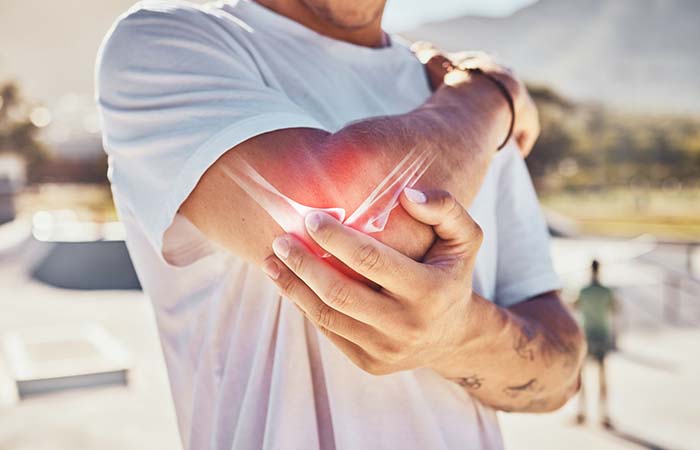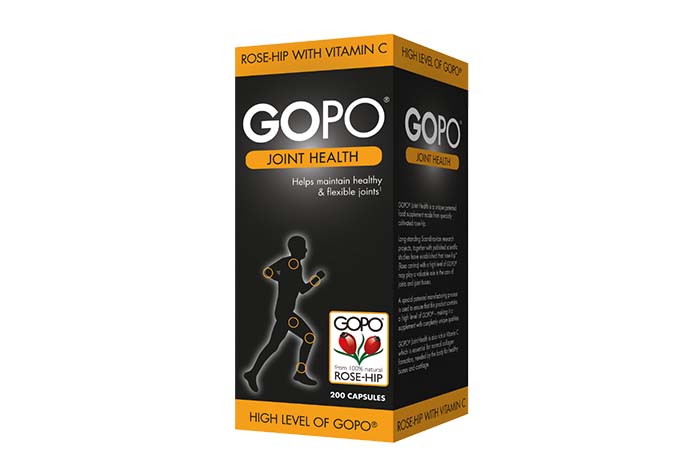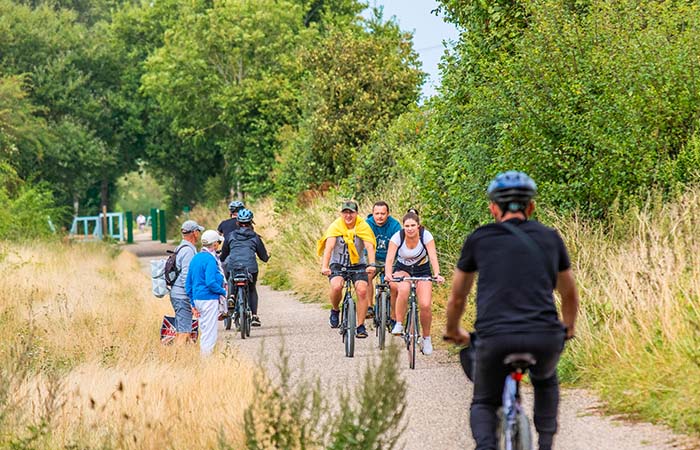Easing aches and pains
In OTC
Follow this topic
Bookmark
Record learning outcomes

Joint pain affects almost a third of the UK population, limiting mobility and quality of life. Victoria Goldman explores the causes, symptoms, and most effective treatments
Pain is one of the most prominent causes of disability worldwide. It’s a very personal experience, as everyone feels pain differently, and it can significantly affect daily life. Acute joint and muscle pain is generally self-limiting, often caused by an injury or surgery, and clears up within around three months.
Chronic joint and muscle pain may be present all of the time or it may come and go. It doesn’t always have a clear cause, although it’s often due to arthritis or lower back pain. According to NHS England, over 20 million people in the UK (almost one third of the population) have a chronic musculoskeletal condition.
The October 2024 report ‘Managing musculoskeletal pain in the community pharmacy’ by the Faculty of Pain Medicine (FIP) states that community pharmacists play a vital role in the assessment and management of chronic musculoskeletal conditions “from a pharmacological and non-pharmacological point of view”. They can do this by educating and supporting patients to use medicines for chronic pain safely and advising on self-care and behavioural changes, especially relating to modifiable risk factors such as obesity and smoking. According to FIP, it’s also important that pharmacists emphasise that chronic musculoskeletal pain can’t be cured but can be kept under control.
Dr Nisa Aslam, GP advisor to Combogesic, points to research by the brand that has found 10 per cent of people suffer from pain “all day, every day” and 98 per cent suffer once a month. She comments: “With a pharmacy catchment area of 5,000 that is equivalent to 500 and 4,900 customers respectively.
“The research also showed that 38 per cent experience back pain and 30 per cent leg pain, both of which, like shoulders, necks and wrists may be sites of general joint and muscular pain to arthritis and sprains or strains. Again, this represents a potentially large number of pharmacy customers.”
Acute injuries
Strains and sprains are common acute injuries affecting the soft tissues. They’re particularly common in people doing sport, older people and those with reduced balance, strength, flexibility and coordination. The NHS website highlights that most sprains and strains can be managed without seeing a GP.
Alwyn Fortune, community pharmacist and Royal Pharmaceutical Society policy lead in Wales, recommends the PRICE approach – protect, rest, ice, compression and elevation. “This five-step method helps reduce swelling and support recovery in the early stages of injury,” he says. “Teams should advise against applying heat, drinking alcohol or massaging the area in the first 48 hours, as these can worsen swelling.”
According to FIP’s October 2024 report, pharmacists can guide customers on the use of over-the-counter analgesics to manage acute muscle pain. “For acute strains and sprains, I recommend ice or heat, depending on what customers prefer,” says Jose Castillo, community pharmacist at Sidmouth Pharmacy. “I also advise resting the injured part such as the ankle or knee, and oral anti-inflammatory medicines such as ibuprofen if these are suitable for patients. I don’t recommend any type of codeine. I would always suggest trying self-treatment first and then going to the GP in three days or so if there’s no progress.”
Claire Mills, physiotherapist, pilates expert and founder of Core LDN, often uses taping to help in the early stages of muscle strains to help with pain relief. “If something is swollen, I recommend cold pads,” she says. “Ice is best and can help with pain, but it should be the correct size to encase the whole area not just the painful part, i.e the whole finger.”
Matthew Harrison, specialist in musculoskeletal conditions at First Contact Physiotherapist based in a GP practice and spokesperson for the Chartered Society of Physiotherapy, says that most acute sprains and strains will get better on their own over the course of six weeks.
“This will, of course, depend on each person’s overall health and the nature of the injury,” he says. “Rest is important but that doesn’t mean completely avoiding using the injured area. It’s using the area little and often as pain allows, and gradually increasing this over a few days then weeks.
Osteoarthritis
Osteoarthritis is the most common type of arthritis in the UK. According to Versus Arthritis, 10 million people in the UK have the condition, mainly in the knees and hips. Osteoarthritis is often poorly managed, with many people experiencing pain on most days. Patients are often taking long-term pain relief and aren’t given self-care guidance, such as weight management and exercise strategies.
Dr Emma Davies, principal pharmacist at Cwm Taf Morgannwg University Health Board and British Pain Society member, says that the problem is often complex. “Some people feel permanently affected whereas others may have periods where they are not particularly bothered by symptoms but then experience a ‘flare-up’ for a time that is painful and difficult to manage,” she says. “Some people can have a lot of change on an X-ray but not be experiencing high levels of pain or changes in what they can do.
“Other people may have less significant X-ray changes but be very debilitated. Medicines are not always helpful, so there’s been a shift towards a more holistic approach that includes physical activity, weight management and patient education.”
Paracetamol used to be the first-line painkiller recommended for osteoarthritis, due to the risks of taking nonsteroidal anti-inflammatory drugs (NSAIDs) regularly. However, National Institute for Health and Care Excellence (NICE) guidance on osteoarthritis management now recommends that paracetamol should only be used “infrequently for short-term pain relief and only if all other pharmacological treatments are contraindicated, not tolerated or ineffective”.
In December 2024, researchers at the University of Nottingham found that repeated doses of paracetamol in people aged 65 and over can lead to an increased risk of gastrointestinal, cardiovascular and renal complications. Therefore, care must be taken when repeated doses are needed for chronic painful conditions such as osteoarthritis in older people.
“Obviously, there are people for whom an NSAID is not going to be suitable,” says Davies. “In those cases, people may choose to take paracetamol, and some will find it makes a difference to them and enables them to keep moving, which is the main aim of any management.”
NICE guidance for osteoarthritis management recommends topical NSAIDs as the first-line analgesic, before oral versions. “For elderly people who are taking a lot of other oral medication, I suggest topical anti-inflammatories to avoid any interactions,” says Castillo. “I recommend a gel for large areas and creams or gels for localised areas. Patches tend to be good for back pain.”
According to Fortune, it’s important that pharmacy teams support patients with osteoarthritis by discussing both lifestyle and medication options. “Encourage patients to maintain a healthy weight and stay active, as this can help to strengthen muscles and joints, easing symptoms over time,” he says. “Pharmacy teams should follow up-to-date NICE guidelines when recommending pain relief for osteoarthritis. If medication is appropriate, topical NSAIDs can prove beneficial for patients when used alongside lifestyle changes. These should be recommended at the lowest effective dose for the shortest possible time, as well as assessing any potential interactions with other medicines someone may be taking.”
Non-drug relief
In 2024, FIP issued guidance for pharmacists on “Using heat therapy for the management of musculoskeletal pain”. Heat therapy relieves stiffness and tension and is particularly beneficial for chronic pain by reducing muscle pain and soreness and loosening tight muscles. It isn’t generally advised for acute injuries but can be helpful later in recovery.
“There’s a lot of debate about heat versus ice,” says Lindsey Fairbrother, superintendent pharmacist at The Good Life Pharmacy in Hatton. “Generally, for immediate pain I would recommend cold, and then heat for longer term pain.”
Davies says it’s important that patients are aware that many effective self-help, pain-relieving measures don’t involve medicines. “Encourage people to experiment a little bit, perhaps trying a warm pack before taking medicines to reduce pain and stiffness and aid movement.”
Consultant rheumatologist Dr Rod Hughes comments: “Many commonly used analgesics such as NSAIDs and opioids are metabolised through the liver, and although damage to the liver is rare it can happen. To avoid the risk altogether, I always encourage patients to take as few of these painkillers as possible and to look for safe, natural supplements.”
“There are supplements such as chondroitin and glucosamine, which some people believe help with joint pain,” says Davies. “General advice for people who want to try them, and can afford to buy them, is to try them for a month or so. If the person doesn’t feel the supplements make a difference, then stop them. Pharmacists should always check before selling supplements whether the person is taking other medicines or has other conditions.”
Fortune says that non-medicated products such as heat wraps, joint supports and insoles can provide comfort and reduce strain on joints, and some people also benefit from using Transcutaneous Electrical Nerve Stimulation (TENS) machines as part of a wider management plan.
“TENS machines can provide temporary relief for both acute and chronic joint or muscle pain by stimulating the nerves and blocking pain signals,” he says. “Pharmacy teams should explain how to use them safely and effectively, ensuring patients are aware of potential contraindications – for example, TENS machines shouldn’t be used by patients with epilepsy or those who have a pacemaker.”
Brand Insight: Joint Health Hub
Lanes Health has launched Joint Health Hub, a dedicated professional portal on its GOPO Joint Health website. Designed for healthcare professionals, it offers a user-friendly interface with quick access to free, essential resources for joint health management. GOPO Joint Health uses a scientifically documented rose-hip powder, which contains high levels of galactolipid. GOPO research suggests rose-hip may support joint care, with GOPO studied in over 20 scientific trials. The portal is at www.gopo.co.uk
Exercise benefits
According to Versus Arthritis’s The State of Musculoskeletal Health 2024 report, regular physical activity may reduce people’s risk of hip and knee osteoarthritis pain by 6 per cent, joint and back pain by 25 per cent and falls by 76 per cent. It can reduce mental health problems too. According to the charity’s research, 60 per cent of people with musculoskeletal conditions report using physical activity to manage their symptoms, and 70 per cent said they would like to be more active.
Aslam recommends regular low-impact exercise like swimming to help maintain joint mobility and strengthen muscles.
She adds: “Maintaining a healthy weight can help both to reduce the risk of arthritis and manage it. An anti-inflammatory diet and/or supplements including oily fish, like salmon and omega-3 fatty acids can help reduce inflammation. Plenty of fruit and vegetables, beans and wholegrains are important too.”
“We can’t say being physically active and regularly exercising will prevent arthritis, as its cause is due to a multiple range of factors,” says Harrison. “However, we know that exercise is the key treatment for managing its symptoms (predominantly pain and stiffness). This can support the person, meaning less pain and as a result remaining active. This can not only help the symptoms of arthritis but also help overall cardiovascular and mental health, all vital for a balanced healthy lifestyle.”
Despite these benefits, the Versus Arthritis 2024 report found that 56 per cent of adults with musculoskeletal conditions said that their pain, fatigue and dexterity were a significant barrier to being physically active.
“If people are overweight, their joints may be too painful to exercise, which is why weight loss and good pain relief are so important,” says Fairbrother. “If people have been referred to a physiotherapist, they should be doing regular exercises for their joints. But this often depends on where the arthritis is. If they have arthritis in their toe, for example, they may also need specialist footwear advice. They will need to wear footwear that supports their toe when walking or exercising, such as rocker sole trainers.”


